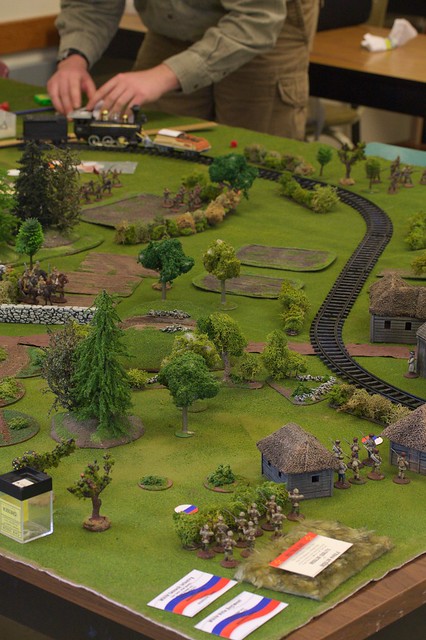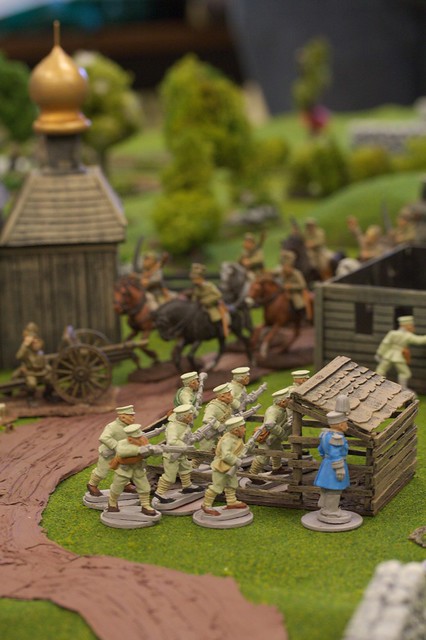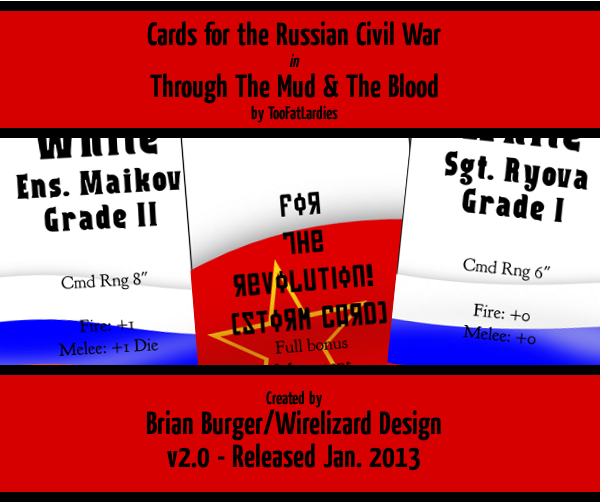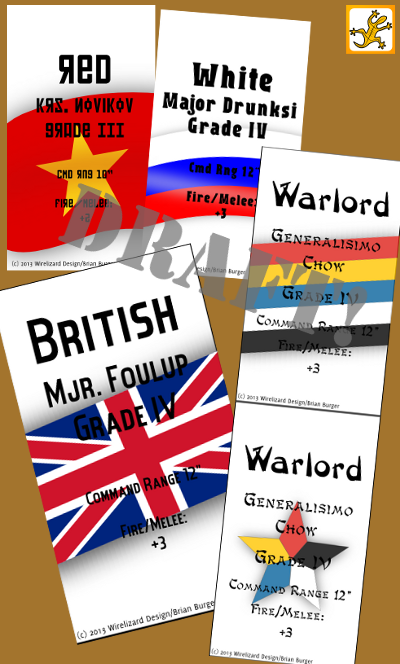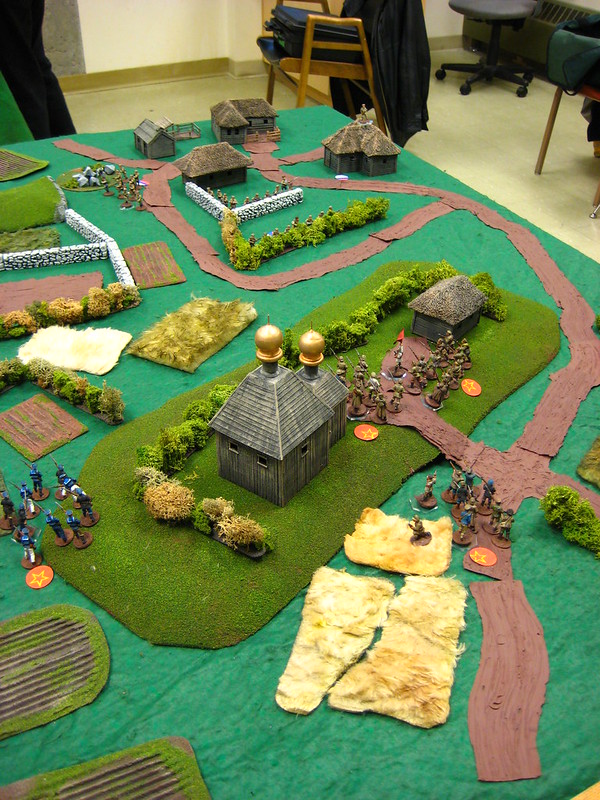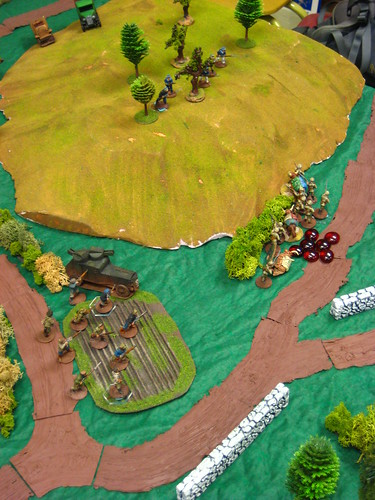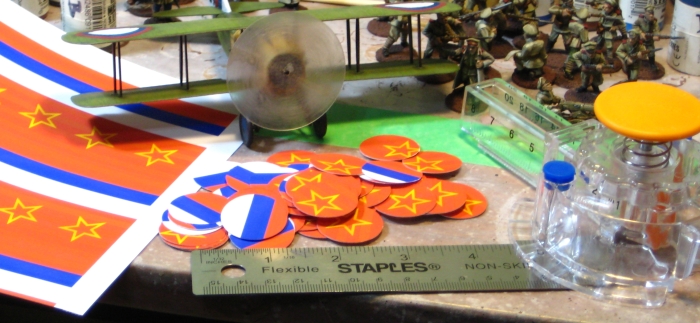We had a quick and messy intro to the TooFatLardies’ Chain of Command/Through the Mud and the Blood WW1 hybrid today with my Russian Civil War figures. Chain is originally a WW2 platoon-level set of rules with some of the core rules based on the WW1 Mud & Blood rules we have been playing for several years, and in the December 2014 Christmas Special the Lardies closed the circle and provided an adaptation of Chain for the Great War, pulling rules out of M&B as needed to replace or supplement the basic Chain rules.
Our forces were as follows:
One short platoon of Bolshie Reds – four rifle sections of 7-10 men each, two Senior Leaders – who rolled hot for their Force Morale which was at 11 to start!
One short platoon of Whites, two Senior Leaders, three rifle sections of 7-10 men, 1 Maxim MMG with four crew, not as into this whole Civil War thing as the Reds with a Force Morale of only 8.
I hadn’t actually sat down to figure out the exact force balance on this particular force mix (TFL provide tools to do that, though) and we ignored the Support Points rules today and just ran with these basic forces, but it got us a good tight game with lots of back-and-forth until the White’s Force Morale collapsed to 0, so I think I was more or less right. Almost certainly too many Senior Leaders for either side at most stages of the RCW, but for an intro game I’m not fussed.
The first third of the game was all in the White’s favour; their Maxim deployed to fire down the village street and blotted out one Red rifle section single-handed, while two of the White rifle sections shot up, Pinned, and then close assaulted a Red rifle section that had pushed across main street and hunkered down in one of the hamlet’s houses but was isolated from any Red support.
The Whites had a string of dead Junior Leaders which pummelled their force morale, though, and pinned their Senior Leaders down acting as section commanders. The breaking point came when one White rifle section and the platoon Lt. launched a singledhanded close assault through the rear door of a house with a basically unsuppressed Red rifle section in it and got bashed all to hell, killing not a single Red and being thrown out into the open ground where irritated Reds quickly Pinned and then Routed them with close range rifle fire, killing the Lt in the process and routing the Whites with a FM of zero…
I’m absolutely certain we did a couple of things wrong, I know we missed rules and in some cases deliberately ignored them, but it was a good quick game and a great intro to CoC.
The Patrol Phase & Jump-Off Points are great, the Patrol Phase is much tenser and more tactical than the opening few moves of most games are, and JoPs mean less random wandering around the tabletop and more direct action!
The Command Dice mechanic isn’t as flavourful as M&B’s cards, but it’s quick and interesting, and often forces you to make difficult choices as to who to activate when. The actual Chain of Command Dice mechanic is also interesting but we didn’t use it much except to end the Turn and once to avoid a Force Morale check – there are more options for using Command Dice that we didn’t explore in this game.
I really like the fact that Chain has a Force Morale setup; sometimes in M&B it felt like you could feed men endlessly into the storm with just a bit of luck on clearing Suppression until everyone was dead. Not happening in Chain!
The actions/activations setup has been both clarified and expanded in Chain over M&B. Movement and fire, suppressive fire, and overwatch are all improved from M&B. The vehicle rules have had some expansion and clarification as well, especially with regards to Shock and vehicle morale.
For larger games, especially at conventions where I want to have two-four players per side I’ll probably stick with straight M&B, but for smaller games Chain/M&B (should we call it “Chain of Mud”?) is probably going to become my go-to system. I’m looking forward to more games and to getting to know the rules better!

